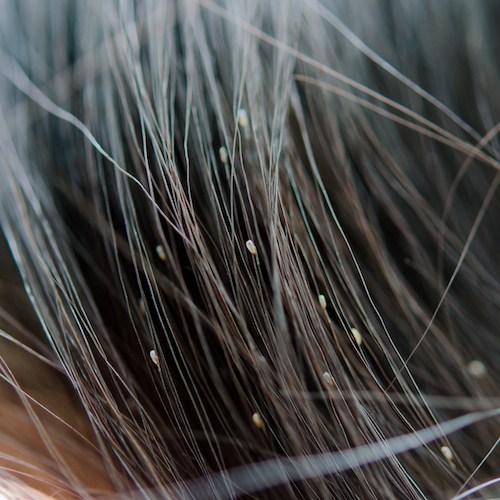Every Parent’s Nightmare: Head Lice and How to Get Rid of Them Naturally

If you’ve ever had to deal with head lice, then you know how exhausting and time-consuming the process can be. It’s no surprise that just the thought of lice showing up at school sends a shiver down every parent’s spine.
Unfortunately, lice outbreaks are more common than many think—especially when kids return to school after summer break, having spent weeks in close contact with other children.
It usually starts with one or two kids scratching their heads. Then, before you know it, the issue spreads like wildfire. Soon, the entire household is scrambling to avoid catching lice.
Lice treatments are no walk in the park. Many of them cause discomfort, take up valuable time, and don’t even guarantee success. Sometimes, even after treatment, the lice make a comeback.
How Lice Spread
Kids are the primary carriers when it comes to spreading lice quickly and widely. According to the Care Guidebook, children are most vulnerable during the summer, and once school resumes, lice find the perfect opportunity to thrive.
It’s important to note: lice do not fly or jump. They spread by crawling from hair strand to hair strand.
A common misconception is that lice can be spread through hats or hairbrushes. But the Care Guide clarifies this isn’t very likely, as lice that fall off the scalp are usually weak and unlikely to survive for long.
Spotting the Signs of Lice
While lice aren’t dangerous, they are itchy, uncomfortable, and can quickly escalate into a much bigger problem. The Care Guide notes that symptoms—like persistent scalp itching—typically show up four to six weeks after the initial infestation.
The easiest way to detect lice is by checking the scalp directly. Adult lice are small, translucent, and about 1–3 millimeters in size. They can appear gray, brown, black, or even red. Use a lice comb to comb through the hair from the nape to the forehead, ideally over a sink to catch any lice that fall out.
Finding the Eggs
Interestingly, lice eggs (nits) are often easier to spot than the lice themselves. Eggs close to the scalp tend to be darker if they’re still “alive,” and pale if they’re empty. They’re typically around 1mm long.
The Care Guide recommends beginning treatment only when you find live lice—not just empty eggs. The eggs can either be combed out manually or left to fall away naturally as the hair grows.
An All-Natural Lice Treatment That Works
While over-the-counter lice shampoos are widely used, they’re often not 100% effective. Removing every last egg requires patience and a thorough comb-out, and you may need to treat every family member—twice. That gets expensive and exhausting fast.
Thankfully, there’s a more natural, low-cost alternative shared by the Healthy Life Center. This method skips the harsh chemicals and still delivers strong results.
What You’ll Need:
- A lice comb
- White vinegar
- Mouthwash (preferably one with a strong scent)
- A shower cap or plastic bag
- A towel or cloth
Step-by-Step Instructions:
1. Apply Mouthwash
Begin by thoroughly wetting the hair with mouthwash. Lice hate the smell. Once applied, cover the hair with a shower cap or plastic bag and leave it for an hour.
2. Rinse & Apply Vinegar
After an hour, rinse the hair and apply white vinegar. This helps loosen and remove the eggs from the scalp. Cover the hair again and leave it on for another hour.
3. Comb Through
Wash the hair with regular shampoo, then carefully comb it out using a lice comb to catch any remaining lice or eggs.
4. Prevent Future Infestations
As an extra preventive measure, lightly mist your child’s hair with mouthwash before school. The scent may help repel lice and discourage them from settling in.
Want to Keep Your Family Lice-Free?
Share this helpful guide with your friends and family—especially those with school-aged children. You might just save someone from a major headache (literally and figuratively). Fingers crossed it works just as well for you!